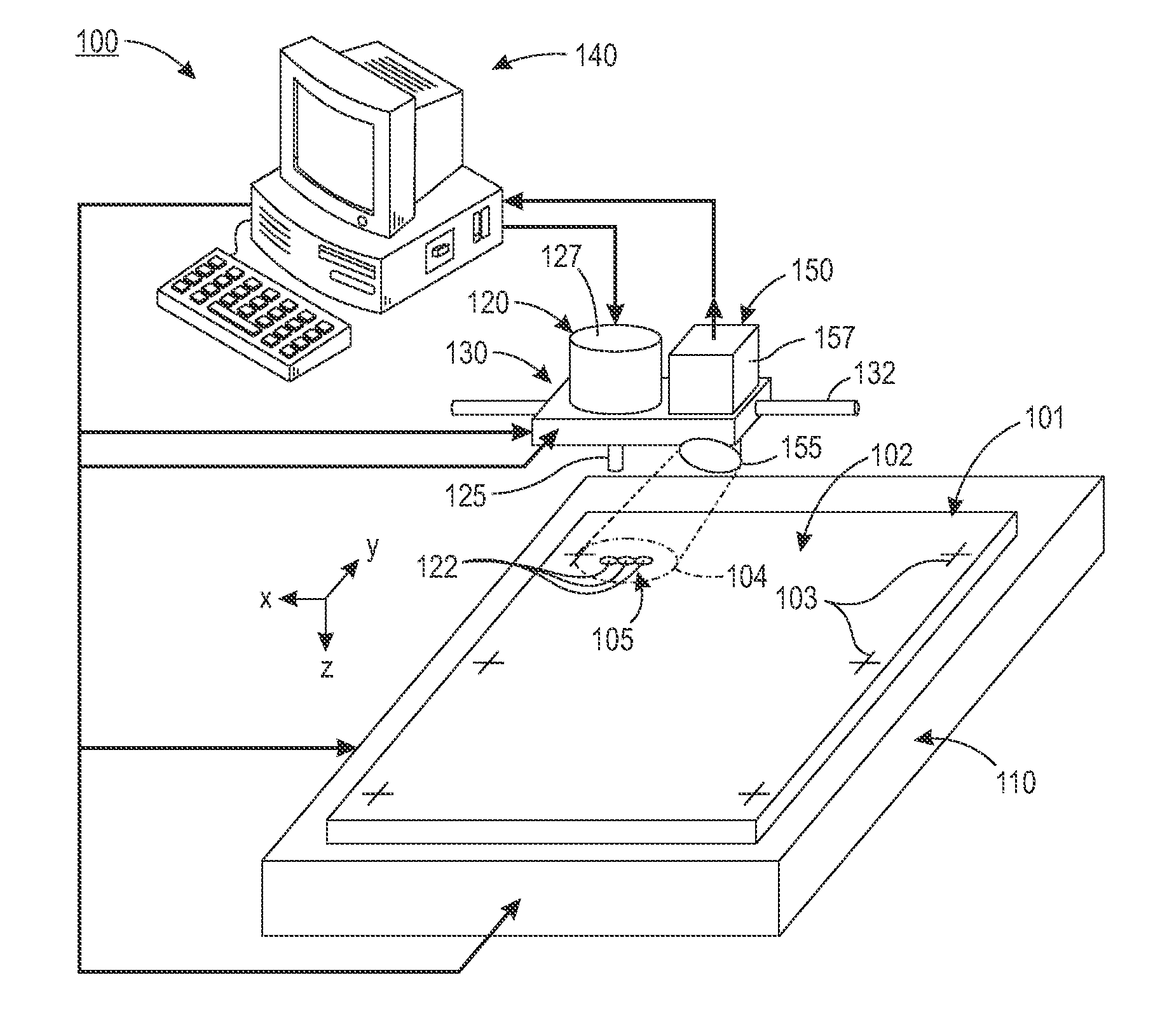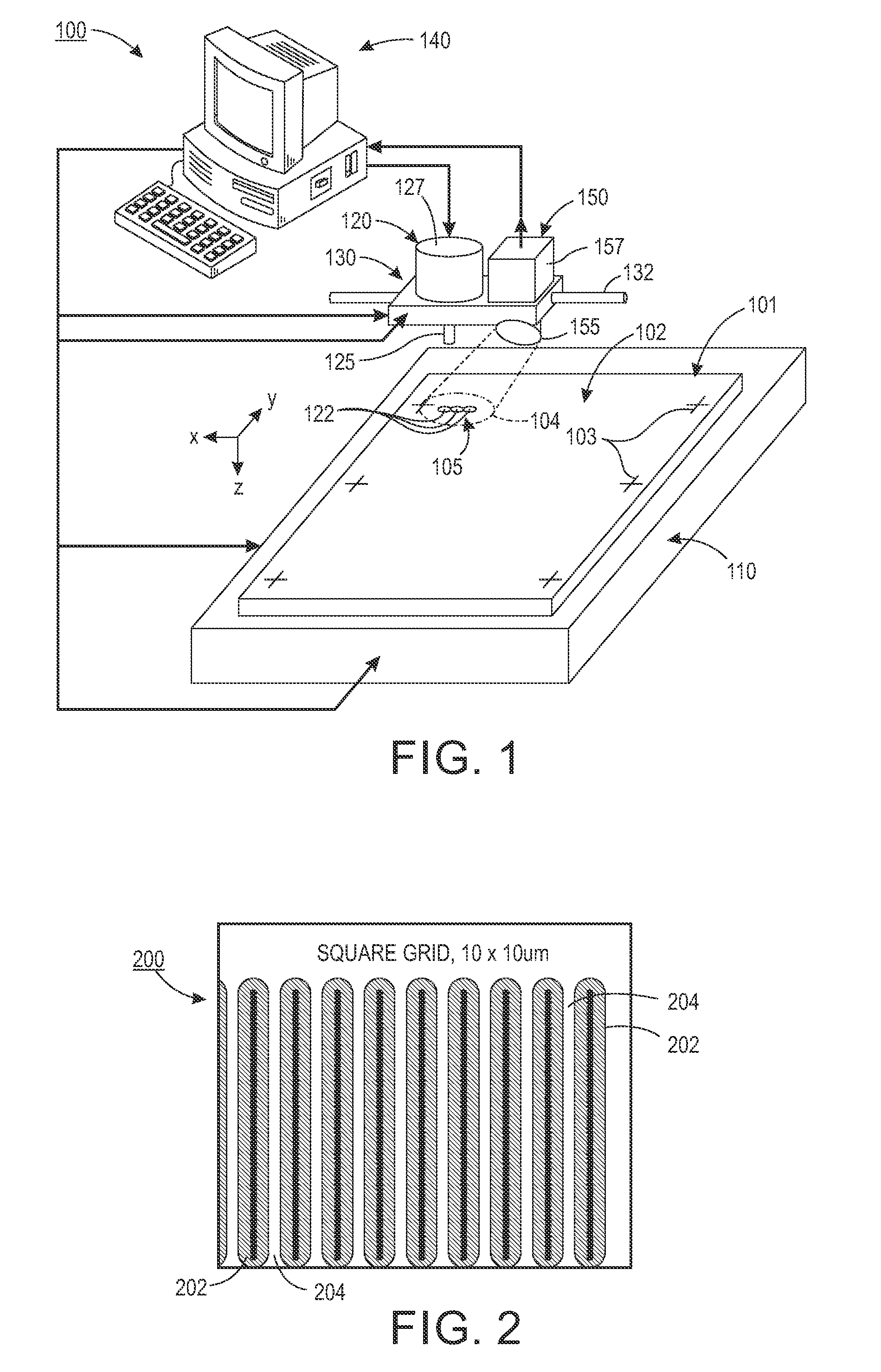Protocol for assigning features and tuning resolution in digital lithography
a technology of features and tuning resolution, applied in the field of digital lithography, can solve problems such as undesired electrical short circuits
- Summary
- Abstract
- Description
- Claims
- Application Information
AI Technical Summary
Benefits of technology
Problems solved by technology
Method used
Image
Examples
Embodiment Construction
[0011]FIG. 1 illustrates a simplified digital lithography system 100 employed in an embodiment of the present application. Substrate 101 is placed or otherwise supported on a platen 110 below a drop source 120, which is suspended over platen 110 by way of a support structure 130. In a manner similar to conventional digital lithography systems, printing operations performed by drop source 120 are controlled by a digital control system 140 (e.g., a computer or other logic circuit programmed or otherwise configured to perform the various functions described herein). During these printing operations, drops 122 of appropriate material are ejected in the z-axis direction onto upper surface 102 of substrate 101 while substrate 101 and drop source 120 are moved relative to each other in the x-axis and / or y-axis directions, whereby printed features 105 are formed by contiguous drops 122 that are deposited and solidify on upper surface 102 of substrate 101.
[0012]Platen 110 and support structu...
PUM
| Property | Measurement | Unit |
|---|---|---|
| distance | aaaaa | aaaaa |
| width | aaaaa | aaaaa |
| width | aaaaa | aaaaa |
Abstract
Description
Claims
Application Information
 Login to View More
Login to View More - R&D
- Intellectual Property
- Life Sciences
- Materials
- Tech Scout
- Unparalleled Data Quality
- Higher Quality Content
- 60% Fewer Hallucinations
Browse by: Latest US Patents, China's latest patents, Technical Efficacy Thesaurus, Application Domain, Technology Topic, Popular Technical Reports.
© 2025 PatSnap. All rights reserved.Legal|Privacy policy|Modern Slavery Act Transparency Statement|Sitemap|About US| Contact US: help@patsnap.com



